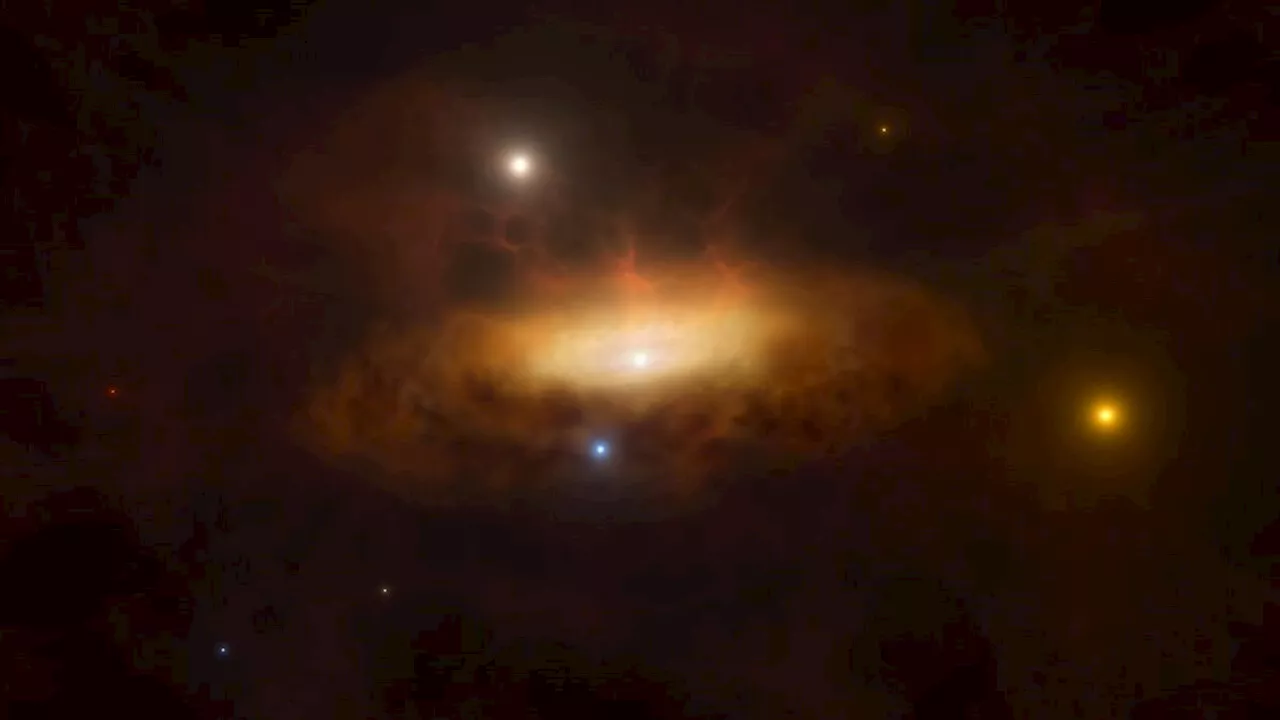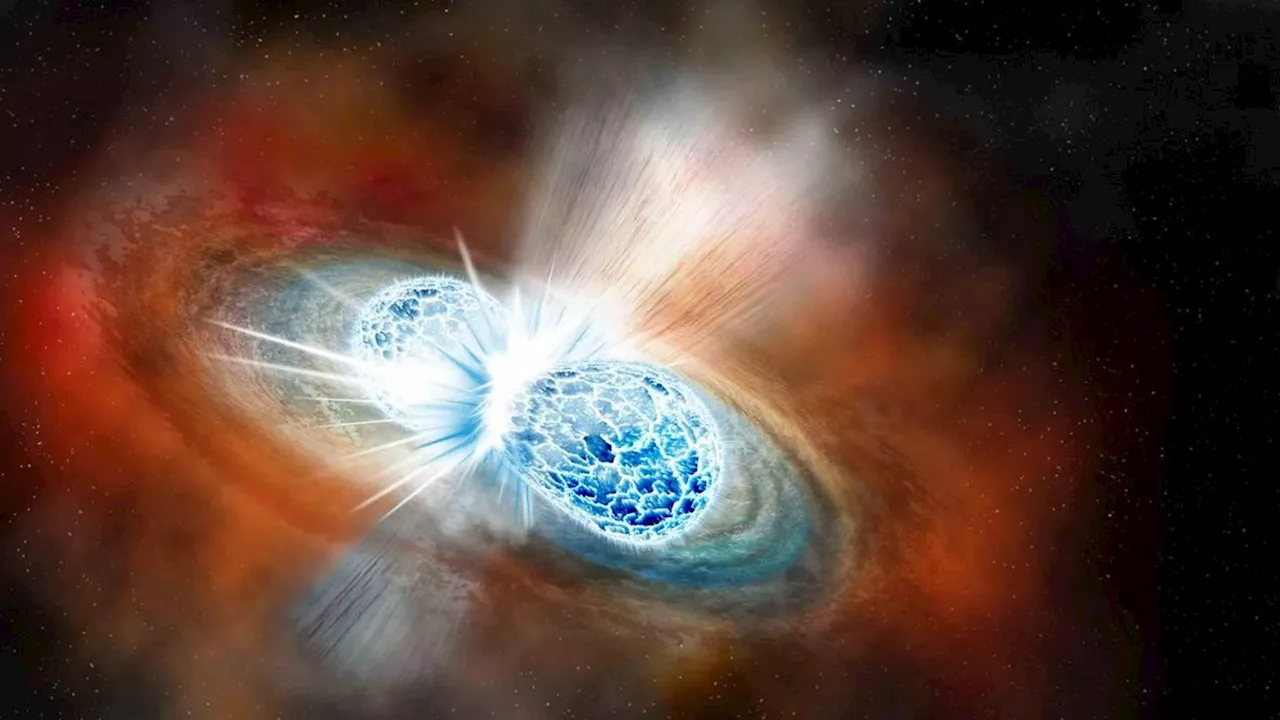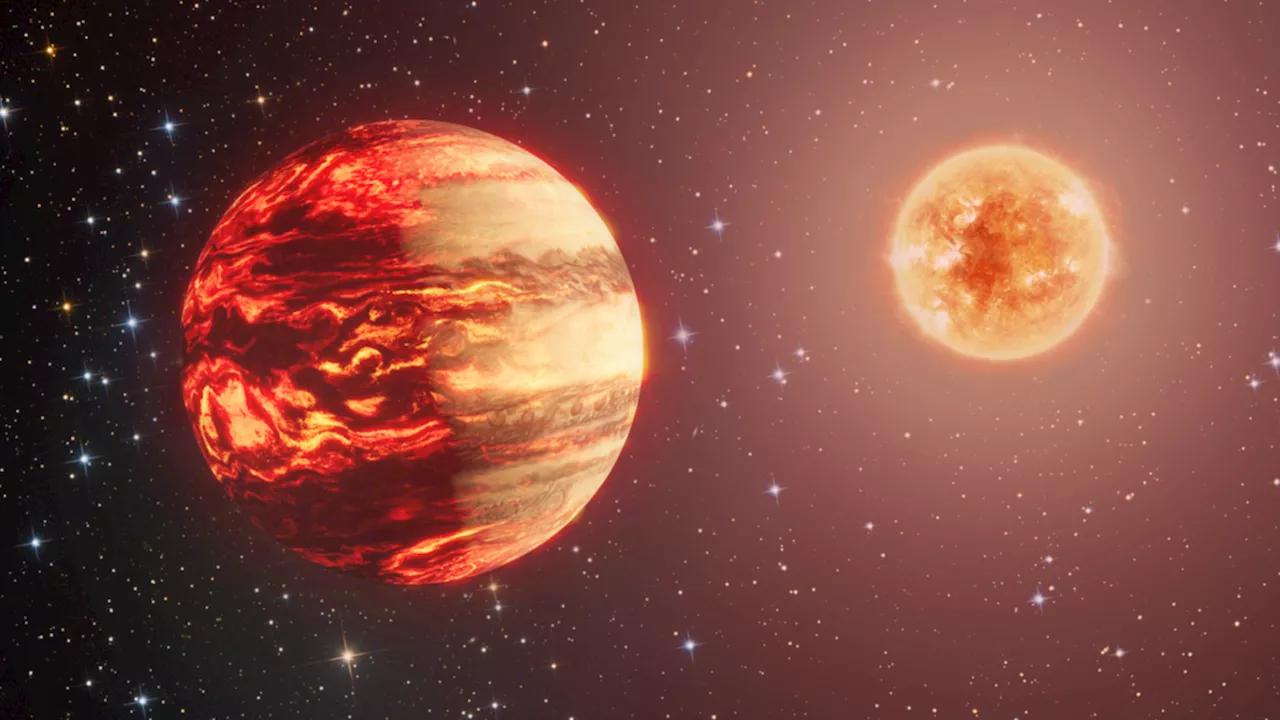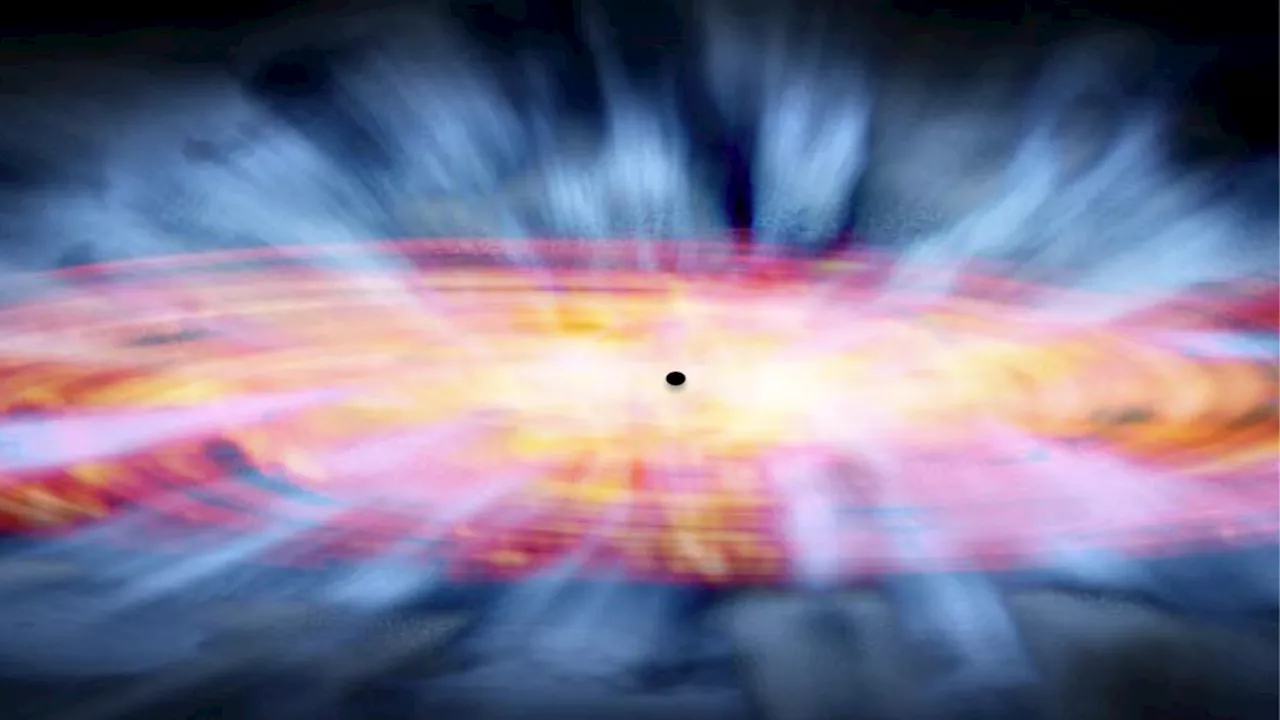Robert Lea is a science journalist in the U.K. whose articles have been published in Physics World, New Scientist, Astronomy Magazine, All About Space, Newsweek and ZME Science. He also writes about science communication for Elsevier and the European Journal of Physics. Rob holds a bachelor of science degree in physics and astronomy from the U.K.
A bright quasar, powered by a supermassive black hole, is blasting out radiation that pushes away clouds of gas in its surroundings to generate winds reaching speeds of around 36 million miles per hour . Oh, and the quasar is also nearly as old as the universe itself.
"The material in that disk is always falling into the black hole, and the friction of that pulling and pulling heats up the disk and makes it very, very hot and very, very bright," team leader and University of Wisconsin–Madison astronomy professor Catherine Grier said in a statement."Theseare really luminous, and because there’s a large range of temperatures from the interior to the far parts of the disk, their emission covers almost all of the electromagnetic spectrum.
The team found that every time they measured this absorption spectrum over 130 observations of SBS 1408+544, there was a shift from the rightful position of the carbon absorption"shadow." This increased over time as radiation from the quasar pushed away material from around it.
United States Latest News, United States Headlines
Similar News:You can also read news stories similar to this one that we have collected from other news sources.
 The Standard Model explained: A deep dive into modern physicsThe Standard Model is a pillar of modern physics, providing a comprehensive framework for particle physics.
The Standard Model explained: A deep dive into modern physicsThe Standard Model is a pillar of modern physics, providing a comprehensive framework for particle physics.
Read more »
 Supermassive black hole roars to life before astronomers' eyes in world-1st observationsBen Turner is a U.K. based staff writer at Live Science. He covers physics and astronomy, among other topics like tech and climate change. He graduated from University College London with a degree in particle physics before training as a journalist.
Supermassive black hole roars to life before astronomers' eyes in world-1st observationsBen Turner is a U.K. based staff writer at Live Science. He covers physics and astronomy, among other topics like tech and climate change. He graduated from University College London with a degree in particle physics before training as a journalist.
Read more »
 Neutron star collisions could briefly trap a bunch of cosmic ghostsRobert Lea is a science journalist in the U.K. whose articles have been published in Physics World, New Scientist, Astronomy Magazine, All About Space, Newsweek and ZME Science. He also writes about science communication for Elsevier and the European Journal of Physics. Rob holds a bachelor of science degree in physics and astronomy from the U.K.
Neutron star collisions could briefly trap a bunch of cosmic ghostsRobert Lea is a science journalist in the U.K. whose articles have been published in Physics World, New Scientist, Astronomy Magazine, All About Space, Newsweek and ZME Science. He also writes about science communication for Elsevier and the European Journal of Physics. Rob holds a bachelor of science degree in physics and astronomy from the U.K.
Read more »
 Gaia space telescope helps astronomers image hidden objects around bright starsRobert Lea is a science journalist in the U.K. whose articles have been published in Physics World, New Scientist, Astronomy Magazine, All About Space, Newsweek and ZME Science. He also writes about science communication for Elsevier and the European Journal of Physics. Rob holds a bachelor of science degree in physics and astronomy from the U.K.
Gaia space telescope helps astronomers image hidden objects around bright starsRobert Lea is a science journalist in the U.K. whose articles have been published in Physics World, New Scientist, Astronomy Magazine, All About Space, Newsweek and ZME Science. He also writes about science communication for Elsevier and the European Journal of Physics. Rob holds a bachelor of science degree in physics and astronomy from the U.K.
Read more »
 Something 'kicked' this hypervelocity star racing through the Milky Way at 1.3 million miles per hour (video)Robert Lea is a science journalist in the U.K. whose articles have been published in Physics World, New Scientist, Astronomy Magazine, All About Space, Newsweek and ZME Science. He also writes about science communication for Elsevier and the European Journal of Physics. Rob holds a bachelor of science degree in physics and astronomy from the U.K.
Something 'kicked' this hypervelocity star racing through the Milky Way at 1.3 million miles per hour (video)Robert Lea is a science journalist in the U.K. whose articles have been published in Physics World, New Scientist, Astronomy Magazine, All About Space, Newsweek and ZME Science. He also writes about science communication for Elsevier and the European Journal of Physics. Rob holds a bachelor of science degree in physics and astronomy from the U.K.
Read more »
 Astronomers get closer to solving the lingering mystery of fast radio burstsRobert Lea is a science journalist in the U.K. whose articles have been published in Physics World, New Scientist, Astronomy Magazine, All About Space, Newsweek and ZME Science. He also writes about science communication for Elsevier and the European Journal of Physics. Rob holds a bachelor of science degree in physics and astronomy from the U.K.
Astronomers get closer to solving the lingering mystery of fast radio burstsRobert Lea is a science journalist in the U.K. whose articles have been published in Physics World, New Scientist, Astronomy Magazine, All About Space, Newsweek and ZME Science. He also writes about science communication for Elsevier and the European Journal of Physics. Rob holds a bachelor of science degree in physics and astronomy from the U.K.
Read more »
